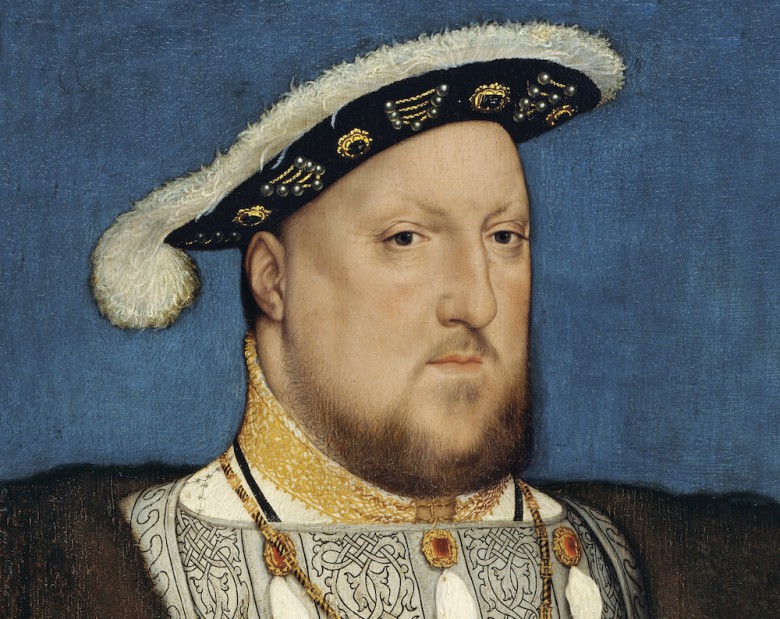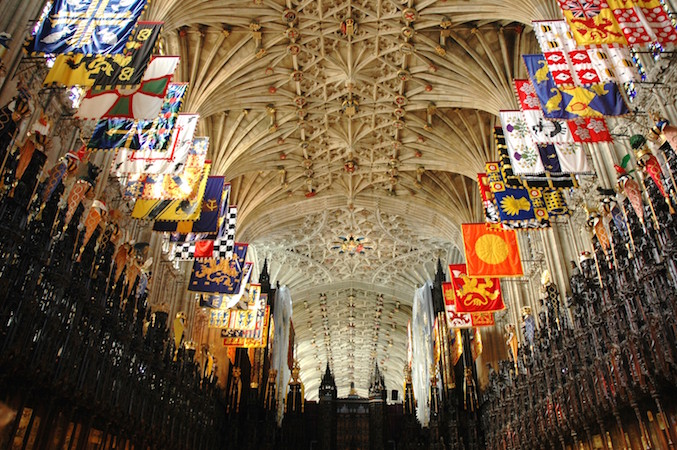16th February 2016
Henry VIII was buried today in 1547. He had died on 28 January at Whitehall Palace, but the announcement was delayed until the 31st while Edward Seymour implemented his coup. Seymour, the uncle of the new king Edward VI, intended to rule until his nephew came of age (it didn't work out like that). Despite the new, Protestant, direction the country was about to take, Henry's death and burial were commemorated traditionally, with Masses, images of saints on banners, and large amounts of incense.
After ten days of Masses in the royal chapel (led by Bishop Gardiner, whom Henry had excluded from court before his death), the coffin began a two-day procession to Windsor, where Henry VI, Edward IV and Jane Seymour were buried. The procession must have been something to behold – it stretched out across four miles, with over a thousand mourners on horseback and hundreds on foot. The coffin was carried on a huge gilded chariot pulled by eight horses, complete with a canopy of estate and life-size effigy with real crown. The roads and bridges on the route had to be checked and repaired in preparation, and trees cut back so the banners wouldn't catch on them, and at Windsor the crowds were kept back with railings. The poor were rewarded with a spectacle and a payout – thousands of Londoners were paid to pray for the dead king.
It was said that the corpse exploded (or that the coffin cracked and leaked) while stopped at Syon Abbey overnight and that dogs licked some of the remains from the floor, although this may have been a story meant to discredit Henry – in the Bible Ahab (a notoriously wicked king of Israel) was punished by having his blood licked up by dogs after allowing his pagan wife Jezebel (read Anne Boleyn) to assert her religion on the country. A Franciscan friar had preached in the 1530s that dogs would lick Henry's blood – now, apparently, the prophecy was fulfilled. Syon was a significant place for the story – Henry had dissolved and seized the abbey. Its community, living in exile in Europe, returned briefly during Mary I's reign.
When the body (in its possibly-repaired coffin) arrived at St George's Chapel Windsor on the 15th, Kateryn Parr watched the Mass from the queen's closet on the upper level, dressed in blue velvet robes and a purple bodice. What must she have been thinking at the burial of her third, most powerful, husband? Did she miss being his queen, or was she entirely relieved at his departure? On the next day her enemy Gardiner preached at the final service, and Henry's officials said goodbye to their king of 37 years as he was placed in the vault with his third queen, Jane.
Images: Portrait of Henry VIII of England by Hans Holbein the Younger, c.1537, Museo Thyssen-Bornemisza, Madrid, via Wikimedia Commons; The choir of St George's Chapel, Windsor Castle, where Henry VIII is buried – photograph by By Josep Renalias (Own work) [CC BY-SA 3.0 (http://creativecommons.org/licenses/by-sa/3.0)], via Wikimedia Commons

